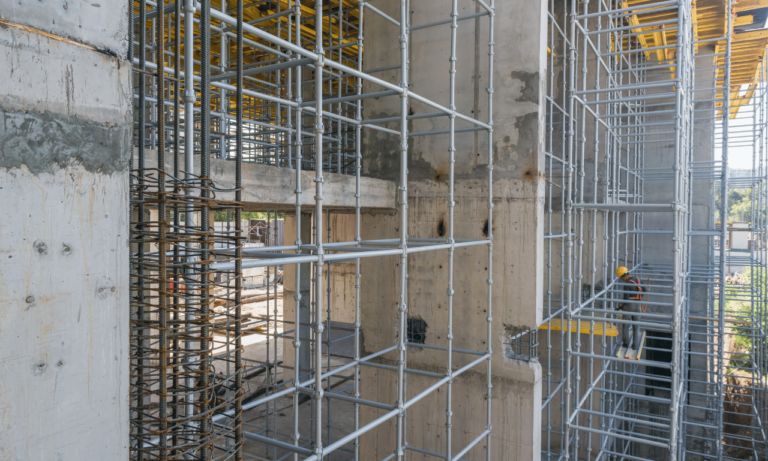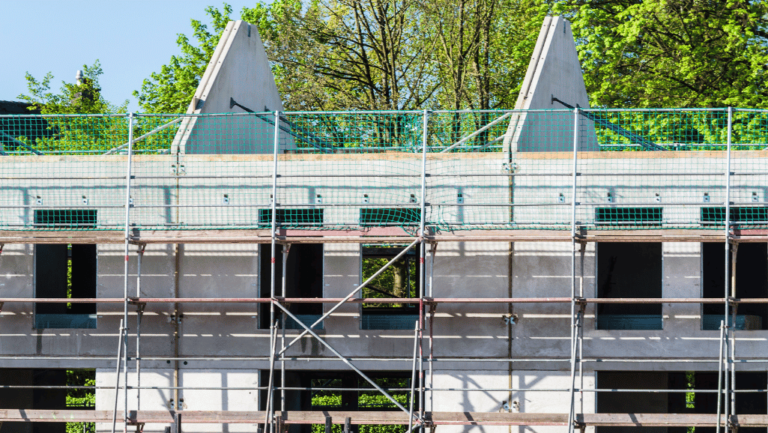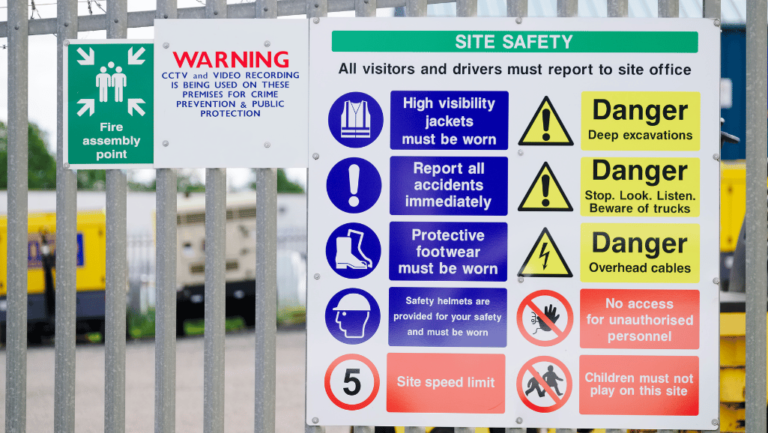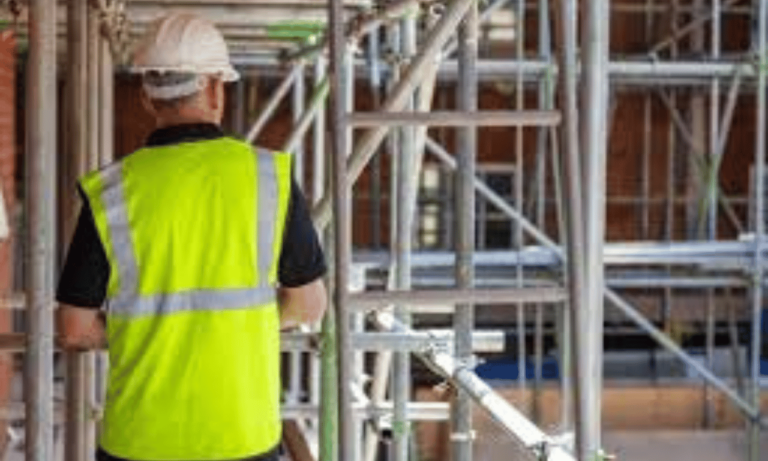Phone:
(+65)8319-0742
Industrial worksites require safe and efficient access for workers to carry out their tasks effectively. Scaffold stair towers are an essential component in achieving this goal, providing a secure and convenient means of accessing elevated areas. These robust structures prioritize worksite safety, making them a valuable asset in various industries.
By incorporating scaffold stair towers into worksite access solutions, industrial operations can significantly enhance their effectiveness. These specialized systems offer a practical alternative to traditional access methods, such as ladders or scaffolding, enabling workers to navigate elevated areas with ease. Whether it’s reaching heights on construction sites, maintaining equipment in warehouses, or conducting inspections on large-scale projects, scaffold stair towers provide a reliable and safe solution.
Not only do scaffold stair systems elevate worksite accessibility, but they also contribute to improved productivity. Their design features, including sturdy construction and ergonomic layout, ensure that workers can move efficiently between different levels and areas, minimizing downtime and maximizing output. With scaffold stair systems in place, industries can optimize their operations and maintain a seamless workflow.
Furthermore, scaffold stair tower design plays a crucial role in meeting specific worksite requirements. These towers are modular in nature, allowing for easy customization based on the site’s unique needs. Whether it’s adjusting the height or adding supplementary features, such as handrails or platform extensions, scaffold stair towers can be tailored to ensure the utmost safety and convenience for workers.
Key Takeaways:
- Scaffold stair towers provide safe and efficient access on industrial worksites.
- These structures enhance worksite accessibility and contribute to improved productivity.
- Scaffold stair towers are customizable to meet specific worksite requirements.
- Incorporating scaffold stair tower design ensures the utmost safety and convenience for workers.
- Choose scaffold stair systems for reliable access to elevated areas and optimal worksite efficiency.
Elevate Worksites with Scaffold Stair Systems
When it comes to ensuring efficient industrial access, scaffold stair systems are a game-changer. These robust and meticulously designed structures play a vital role in enhancing worksite accessibility while prioritizing safety. Let’s explore the various design aspects and features that make scaffold stair systems an indispensable component in worksite access solutions.
First and foremost, scaffold stair systems are engineered to provide stable and secure access between different levels of a worksite. They are specifically designed to withstand heavy usage, extreme weather conditions, and various work environments, ensuring long-lasting performance and durability.
One of the key advantages of scaffold stair systems is their modular design. This means that they can be easily assembled, dismantled, and reconfigured to accommodate changing project requirements. The modular nature of these systems enables efficient and flexible access solutions, allowing worksites to adapt to evolving needs.
Moreover, scaffold stair systems are equipped with several safety features to provide a secure working environment. These features include handrails, slip-resistant surfaces, and guardrails, which help mitigate the risk of accidents and falls. By enhancing safety measures, scaffold stair systems contribute to a safer work environment and minimize potential hazards.
Additionally, scaffold stair systems offer versatile configurations to cater to diverse worksite layouts. They can be customized based on the specific height and width requirements, adapt to irregular surfaces, and incorporate additional accessories such as landing platforms or walkways.
Not only do scaffold stair systems improve worksite access, but they also contribute to overall productivity. With easy and efficient access to different levels of a worksite, workers can navigate seamlessly, saving time and effort. This streamlined access enables efficient workflow and enhances productivity across various construction and industrial projects.
Take a closer look at the various design options and components of scaffold stair systems in the table below:
As shown in the table, scaffold stair systems are comprised of essential components such as stairs, handrails, platforms, and anchors, each serving a specific purpose to ensure safe and efficient access.
Scaffold stair systems offer a reliable and practical solution to elevate worksites, enabling seamless access across different levels and ensuring the safety of workers. With their modular design and comprehensive safety features, these systems have become an indispensable element in the construction and industrial sectors.
The Importance of Scaffold Stair Tower Design
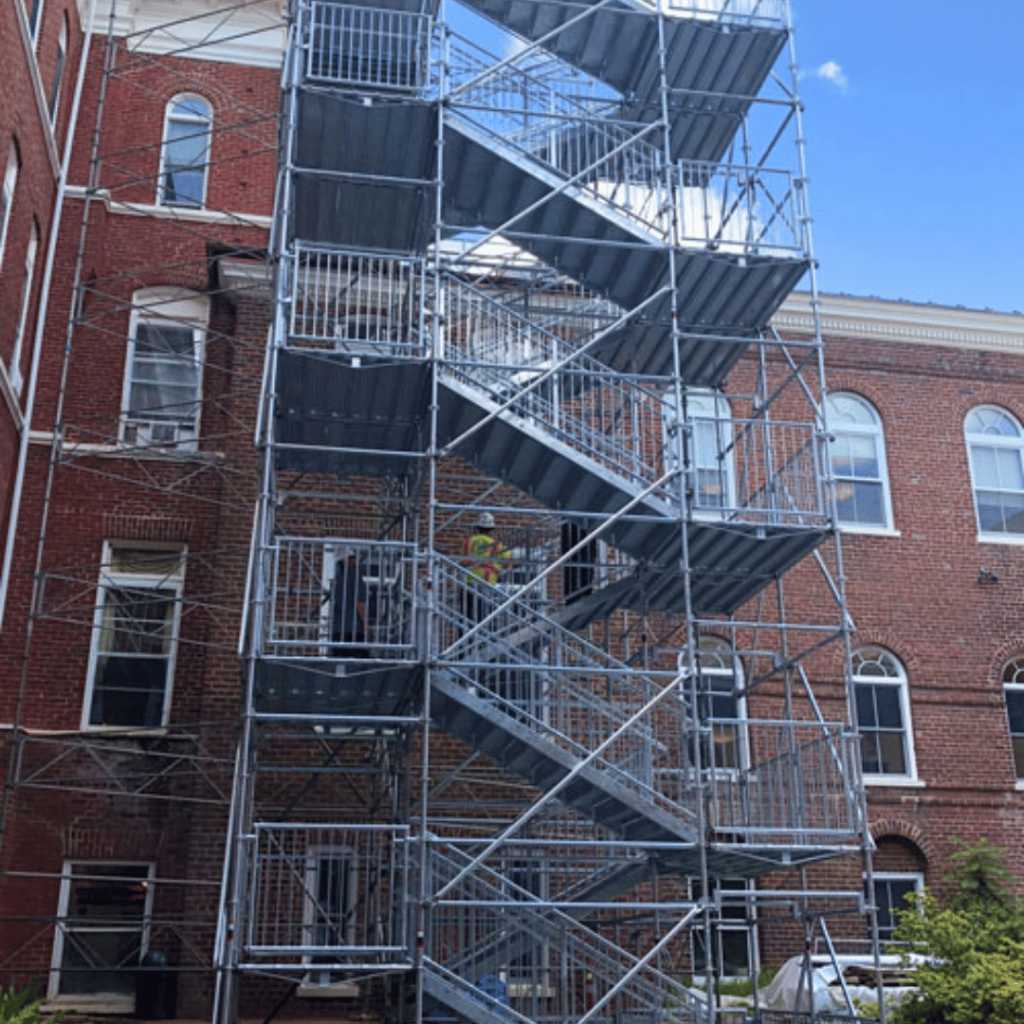
When it comes to construction projects, the design of scaffold stair towers plays a crucial role in ensuring safety and efficiency on the worksite. These towers are specifically engineered to provide secure access for workers, enabling them to navigate multi-level structures with ease.
One of the standout features of scaffold stair towers is their modular design. This means that they can be easily customized and adjusted to fit the unique requirements of different worksites. Whether it’s a high-rise building, a bridge, or any other construction project, modular stair towers offer adaptability and flexibility in terms of design and installation.
The flexibility of scaffold stair tower design allows for quick assembly and disassembly, making construction stair towers an ideal solution for temporary structures or projects that require frequent reconfiguration. This modularity not only saves time but also reduces labor costs, making it a cost-effective choice for construction companies.
The Benefits of Modular Stair Towers
Modular stair towers provide several advantages in construction projects. Their design allows for easy transportation and installation, making them highly convenient for contractors or site managers who require efficient access solutions.
These towers also adhere to stringent safety regulations, ensuring the well-being of workers. They are engineered to withstand heavy loads and provide stable footing, minimizing the risk of accidents. Additionally, the design of scaffold stair towers incorporates safety features such as handrails and non-slip surfaces, enhancing worker safety on elevated platforms.
Moreover, the customization options available in scaffold stair tower design allow companies to tailor the towers to their specific needs, ensuring optimal functionality in different project scenarios. Whether it’s the height of the tower, the number of steps, or additional safety features, the design can be easily modified to meet project requirements, promoting efficiency and productivity.
In summary, scaffold stair tower design is integral to construction projects as it ensures safe and efficient access on worksites. The modular nature of these towers enables customization and adaptability, while their safety features prioritize worker well-being. By investing in well-designed scaffold stair towers, construction companies can enhance worksite access, improve productivity, and maintain a secure environment for their workforce.
Enhancing Safety with Access Stair Towers
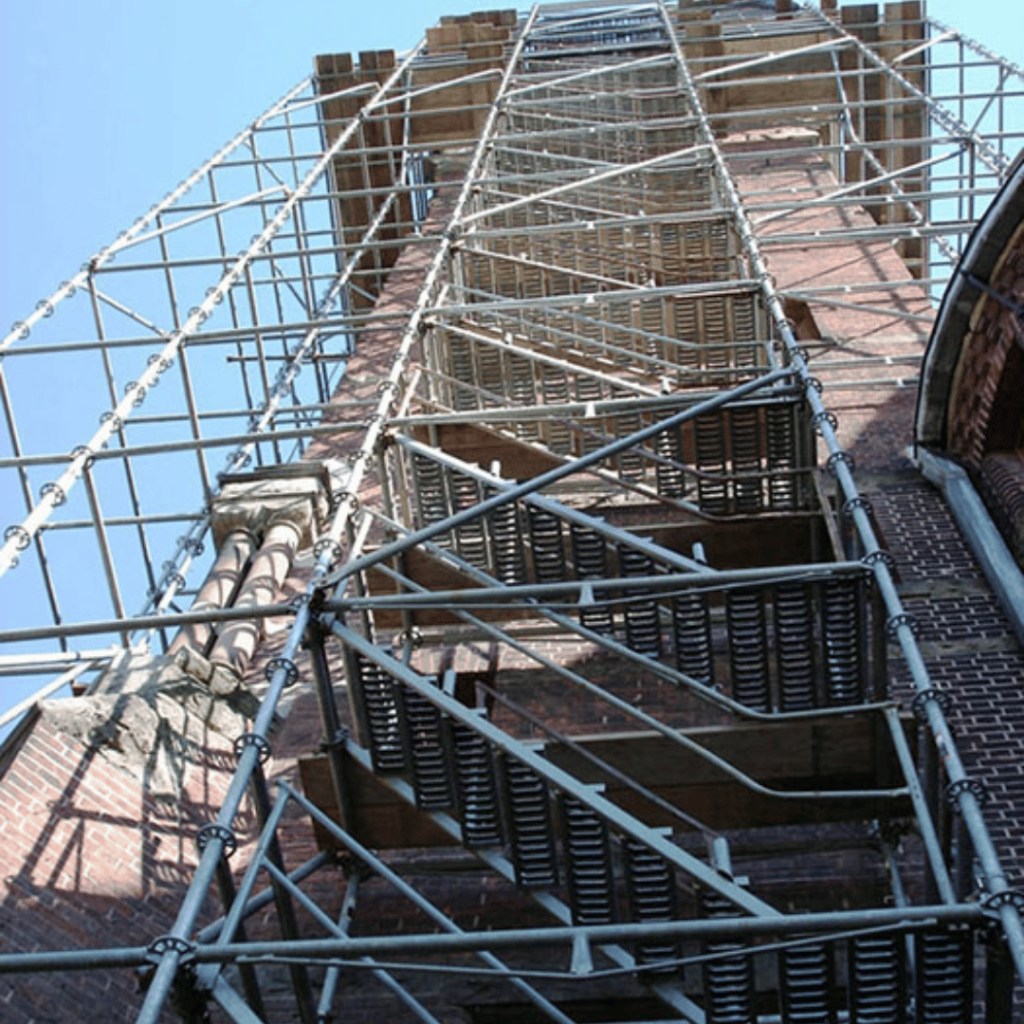
Construction sites prioritize the safety of workers above all else. One vital element in maintaining a secure working environment is the presence of access stair towers. These robust structures play a crucial role in ensuring the well-being of workers and are integral to worksite safety.
Access stair towers are designed with various safety features to minimize the risk of accidents and promote a secure workplace. Let’s explore some of the key safety elements incorporated into these towers:
- Anti-slip surfaces: Access stair towers are equipped with anti-slip surfaces on steps and platforms to prevent slips and falls, even in wet or slippery conditions.
- Handrails and guardrails: These towers are equipped with sturdy handrails and guardrails at appropriate heights to provide stability and prevent falls from elevated areas.
- Safe access points: Access stair towers are designed to provide safe and convenient access to different levels of the construction site. They have well-positioned entry and exit points to ensure easy movement for workers.
- Visibility: Brightly colored stair towers increase their visibility, reducing the chances of accidental collisions or tripping hazards.
- Stability and load-bearing capacity: Access stair towers are designed to be stable and withstand heavy loads, ensuring the safety of workers ascending or descending.
The utilization of access stair towers significantly contributes to a secure working environment. These structures enable workers to move around the construction site with ease while minimizing the potential for accidents and injuries.
Enhanced Workplace Safety with Access Stair Towers
By integrating access stair towers into worksite design, companies demonstrate their commitment to worker safety. These towers create a safer and more efficient working environment by offering sturdy and reliable access to elevated areas. With the incorporation of key safety features, access stair towers are indispensable in ensuring the well-being of workers on construction sites.
Advantages of Access Stair Towers:
| Benefits | Explanation |
|---|---|
| Improved safety | Access stair towers provide secure access to elevated areas, reducing the risk of falls and accidents. |
| Enhanced efficiency | These towers streamline workflow by providing convenient access points, saving workers’ time and effort. |
| Easy assembly and disassembly | Access stair towers are designed for quick and hassle-free set-up, ensuring minimal disruption to work processes. |
| Modular and versatile | These towers can be customized to adapt to various project requirements, making them suitable for a range of worksites. |
With their focus on safety and efficiency, access stair towers are indispensable elements in construction site design. By investing in these structures, companies prioritize the well-being of their workforce, resulting in greater productivity and reduced incidents.
Understanding Scaffold Stair Tower Components
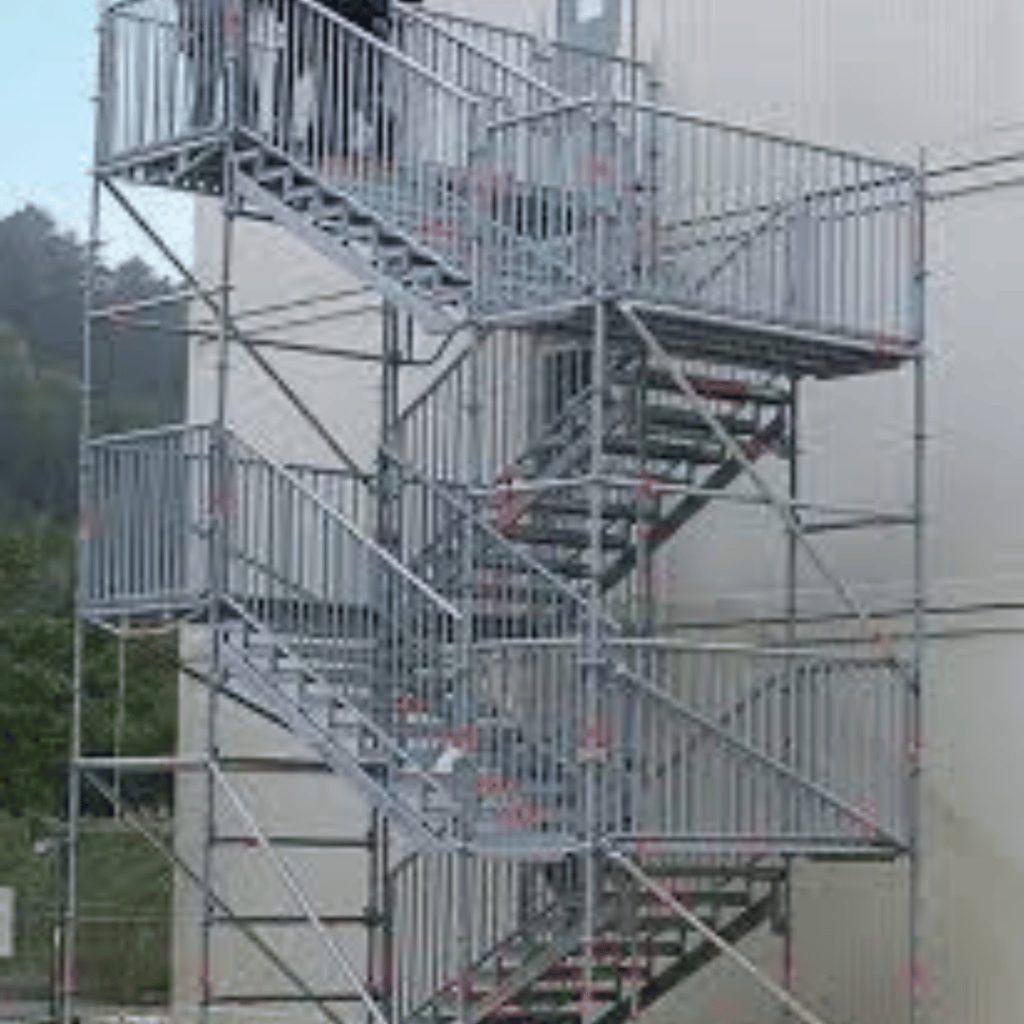
When it comes to scaffold stair towers, having a clear understanding of the different components is essential. These structures play a crucial role in providing safe and efficient access on industrial worksites. By delving into the various parts involved in constructing these towers, we can gain valuable insight into their functionalities and the critical role they play in worksite access.
Scaffold Stair Tower Components
The components of scaffold stair towers are carefully designed to ensure stability, durability, and ease of use. Let’s explore the key elements that make up these industrial stair towers:
- Scaffold Frames: These are the main support structures of the stair tower system. They are constructed using sturdy and lightweight materials, such as aluminum or steel, to provide stability and strength.
- Stair Treads: The stair treads are the steps that individuals climb when accessing different levels of the scaffolding system. They are designed to be slip-resistant and have a comfortable incline, promoting safe and secure movement.
- Guardrails: Guardrails are an integral safety feature of scaffold stair towers. They provide a protective barrier around the stairs to prevent accidental falls and ensure the well-being of workers accessing the structure.
- Handrails: Handrails are designed to provide additional support and stability while climbing the stairs. They are strategically positioned alongside the stair treads, allowing users to maintain balance and grip during ascent and descent.
- Platforms: Platforms are flat surfaces located at various levels of the scaffold stair tower. They serve as resting points or work areas for individuals accessing different parts of the scaffolding system.
- Toeboards: Toeboards are installed along the edge of the stair treads and platforms to prevent objects or tools from falling off the scaffolding system. They enhance overall safety by minimizing potential hazards on the worksite.
By understanding the functionalities of these scaffold stair tower components, worksite managers can ensure the proper assembly and maintenance of these structures. This knowledge facilitates a safer and more efficient working environment, minimizing the risks associated with construction projects.
Table 5: Comparison of Scaffold Stair Tower Materials
| Material | Advantages | Disadvantages |
|---|---|---|
| Aluminum | Lightweight and easy to transport Durability and corrosion resistance Quick assembly and disassembly | Higher cost compared to steel May not be suitable for heavy load requirements |
| Steel | High load-bearing capacity Cost-effective option for long-term use Resistant to extreme weather conditions | Heavier and requires more effort for transportation Prone to corrosion if not properly maintained |
Table 5 provides a comparison of two commonly used materials for scaffold stair towers: aluminum and steel. Consider these factors when selecting the appropriate material for your specific worksite requirements.
Maximizing Efficiency with Modular Stair Towers
When it comes to construction projects, maximizing efficiency is paramount. That’s where modular stair towers come in. These innovative structures provide a range of benefits that enhance productivity and adaptability on worksites.
Modular stair towers are designed to be assembled and disassembled quickly, allowing for easy transportation and setup. This means that construction teams can save valuable time during the installation process, enabling them to focus on other critical aspects of the project.
One of the key advantages of modular stair towers is their versatility. These structures can be customized to fit specific site requirements, making them suitable for a wide range of construction projects. Whether it’s a small-scale renovation or a large-scale industrial development, modular stair towers provide a flexible solution that can be tailored to meet the unique needs of any job.
Furthermore, the modular design of these stair towers allows for easy adjustments and modifications as the project progresses. Need to change the height or configuration of the stairs? No problem. With modular stair towers, you can adapt to evolving project demands without any hassle.
Another advantage of modular stair towers is their durability. These structures are built to withstand the rigors of construction sites, ensuring long-lasting performance and safety for workers and visitors alike. With their robust construction and high-quality materials, modular stair towers provide a reliable and secure access solution.
Benefits of Modular Stair Towers:
- Quick assembly and disassembly for time-saving efficiency
- Customizable design to fit specific site requirements
- Adaptable and adjustable as the project progresses
- Durable construction for long-lasting performance
| Benefits | Description |
|---|---|
| Time-saving efficiency | Modular stair towers can be assembled and disassembled quickly, saving valuable time during the construction process. |
| Customizable design | These structures can be tailored to fit specific site requirements, providing a flexible solution for various construction projects. |
| Adaptable and adjustable | Modular stair towers allow for easy adjustments and modifications, ensuring compatibility with changing project demands. |
| Durable construction | With their robust design and high-quality materials, modular stair towers offer long-lasting performance and safety. |
In conclusion, modular stair towers offer construction teams a versatile and efficient solution for enhancing worksite access. Their quick assembly, adaptable design, and durability make them an ideal choice for a wide range of construction projects. By incorporating modular stair towers into your construction plans, you can maximize efficiency and ensure a safe working environment.
Conclusion
In conclusion, scaffold stair towers are essential for ensuring safe and efficient access on worksites. These sturdy structures play a crucial role in enhancing industrial access while prioritizing the safety of workers. By utilizing scaffold stair systems, construction projects can be conducted with greater ease and productivity.
When it comes to scaffold stair tower design, the modular nature of these towers allows for customization to meet specific worksite requirements. With various design options and components available, decision-makers can optimize worksite access and create a secure working environment.
Furthermore, access stair towers are equipped with safety features that further enhance worksite safety. From sturdy handrails to anti-slip surfaces, these towers provide workers with the utmost protection as they navigate elevated areas.
By choosing scaffold stair towers, construction professionals can achieve maximum efficiency on their projects. The versatility of modular stair towers allows for quick assembly and disassembly, enabling adaptability and minimizing downtime. Whether it’s a large-scale construction site or a smaller industrial setting, scaffold stair towers are the go-to solution for safe and efficient worksite access.
FAQ
What are scaffold stair towers?
Scaffold stair towers are robust structures designed to provide safe and efficient access on worksites. These towers are specifically tailored for industrial use, allowing workers to navigate various vertical levels with ease and security.
How do scaffold stair systems contribute to industrial access?
Scaffold stair systems play a vital role in enhancing industrial access by providing a reliable and sturdy staircase solution. These systems are designed to withstand heavy usage while ensuring ease of movement, contributing to a safer and more efficient worksite.
What is the importance of scaffold stair tower design?
Scaffold stair tower design is crucial in construction projects as it directly influences safety and accessibility. These towers are modular in nature, allowing for customization to suit specific worksite requirements. The design consideration ensures that workers can ascend and descend the tower confidently.
How do access stair towers enhance safety on worksites?
Access stair towers are essential for maintaining a secure working environment on construction sites. These towers incorporate various safety features such as handrails, non-slip surfaces, and guardrails to prevent accidents and ensure the well-being of workers while moving between different levels.
What are the components of scaffold stair towers?
Scaffold stair towers consist of several components that work together to form a complete structure. These components include stair treads, handrails, guardrails, landing platforms, and connectors. Each component has a specific functionality and contributes to the overall safety and stability of the tower.
How do modular stair towers maximize efficiency in construction projects?
Modular stair towers offer numerous advantages for construction projects. They can be easily assembled and disassembled, allowing for quick deployment and adaptability on worksites. This modular nature ensures efficient utilization of resources and enables easy transportation to different project locations.







